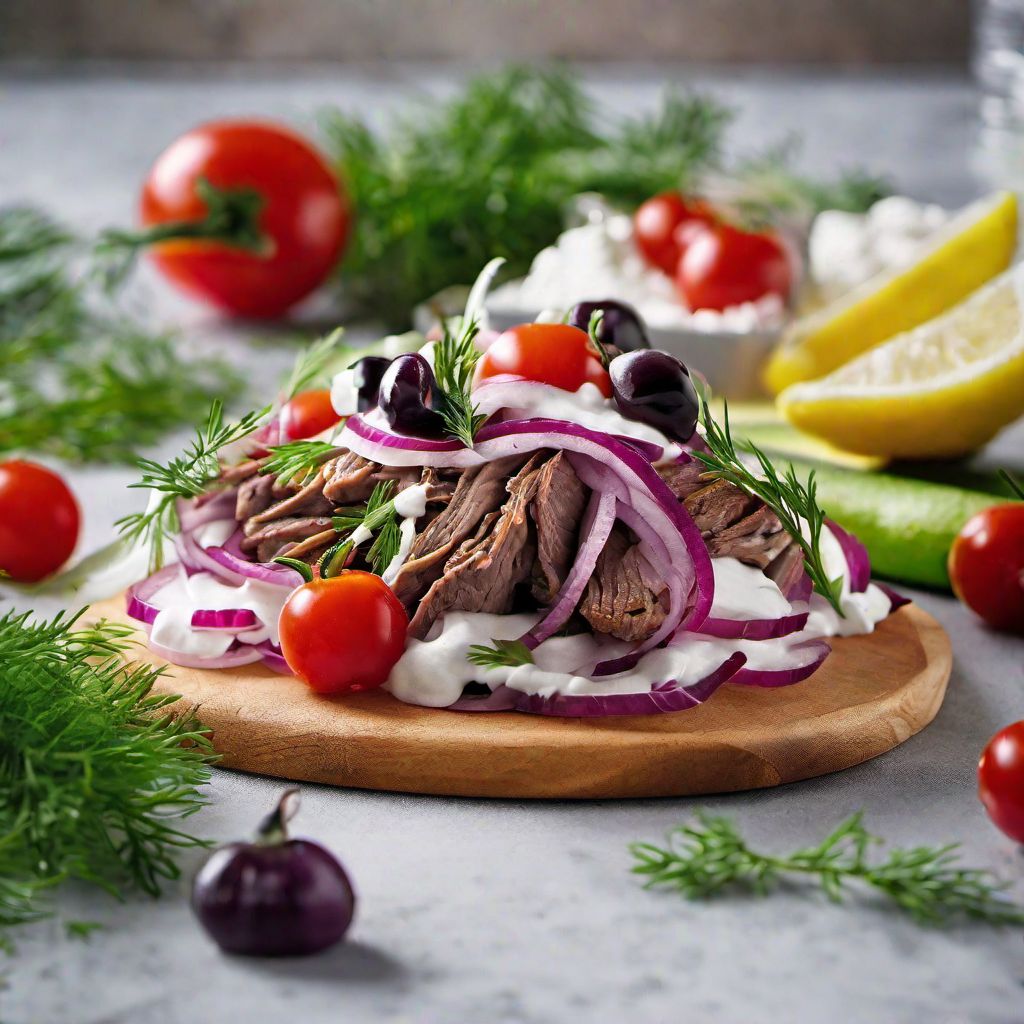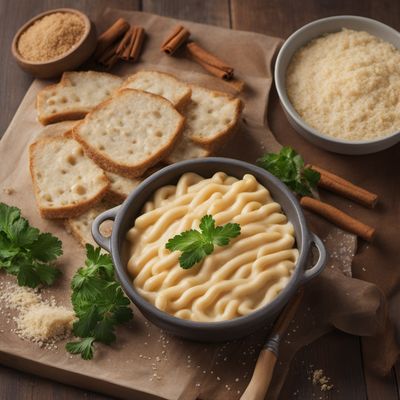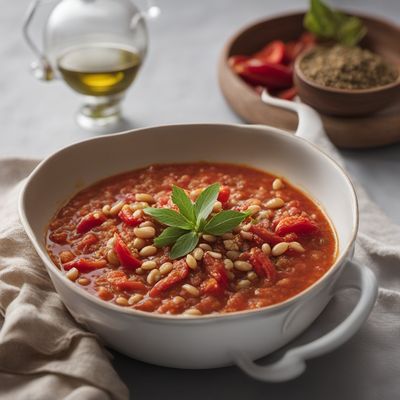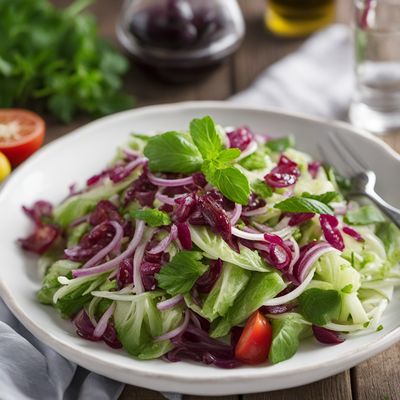
Recipe
Molecular Gastronomy Gyros
The Gastronomic Revolution: Molecular Gyros
4.7 out of 5
In the realm of molecular gastronomy, we embark on a culinary adventure to transform the traditional Greek gyros into a visually stunning and innovative dish. By utilizing scientific techniques and modern ingredients, we elevate the flavors and textures of this beloved Greek classic to create a unique and unforgettable dining experience.
Metadata
Preparation time
720 minutes
Cooking time
15 minutes
Total time
735 minutes
Yields
4 servings
Preparation difficulty
Medium
Suitable for
Vegetarian (with modifications), Gluten-free, Low-carb, Keto-friendly, High-protein
Allergens
Dairy (Greek yogurt), Garlic
Not suitable for
Vegan, Dairy-free, Nut-free, Paleo, Whole30
Ingredients
In this molecular gastronomy adaptation, we deconstruct the traditional gyros and reimagine its components. Instead of the usual pita bread and sliced meat, we will create a gyro-inspired foam, encapsulate the flavors of tzatziki in delicate spheres, and present the dish in a visually captivating manner. We alse have the original recipe for Gyros, so you can check it out.
-
200g (7 oz) lamb shoulder, sous vide 200g (7 oz) lamb shoulder, sous vide
-
10g (0.35 oz) lamb fat, rendered 10g (0.35 oz) lamb fat, rendered
-
100g (3.5 oz) Greek yogurt 100g (3.5 oz) Greek yogurt
-
5g (0.18 oz) cucumber, finely diced 5g (0.18 oz) cucumber, finely diced
-
5g (0.18 oz) fresh dill, chopped 5g (0.18 oz) fresh dill, chopped
-
2g (0.07 oz) garlic, minced 2g (0.07 oz) garlic, minced
-
2g (0.07 oz) lemon zest 2g (0.07 oz) lemon zest
-
2g (0.07 oz) agar-agar 2g (0.07 oz) agar-agar
-
100ml (3.4 fl oz) water 100ml (3.4 fl oz) water
-
10g (0.35 oz) olive oil 10g (0.35 oz) olive oil
-
5g (0.18 oz) red onion, thinly sliced 5g (0.18 oz) red onion, thinly sliced
-
5g (0.18 oz) cherry tomatoes, halved 5g (0.18 oz) cherry tomatoes, halved
-
5g (0.18 oz) Kalamata olives, pitted and sliced 5g (0.18 oz) Kalamata olives, pitted and sliced
-
2g (0.07 oz) dried oregano 2g (0.07 oz) dried oregano
-
Salt and pepper to taste Salt and pepper to taste
Nutrition
- Calories: 350 kcal / 1465 KJ
- Fat: 25g (Saturated Fat: 10g)
- Carbohydrates: 5g (Sugars: 2g)
- Protein: 28g
- Fiber: 1g
- Salt: 1.5g
Preparation
-
1.Preheat a water bath to 60°C (140°F).
-
2.Season the lamb shoulder with salt and pepper, then vacuum-seal it and cook in the water bath for 12 hours.
-
3.Remove the lamb from the water bath and pat it dry. Sear the lamb fat in a hot pan until crispy, then strain and reserve the rendered fat.
-
4.In a bowl, combine the Greek yogurt, cucumber, dill, garlic, and lemon zest. Season with salt and pepper to taste. Set aside.
-
5.In a small saucepan, dissolve the agar-agar in water and bring to a boil. Remove from heat and let it cool slightly.
-
6.Using a syringe, drop small spheres of the tzatziki mixture into the agar-agar solution. Allow them to set for a few minutes, then strain and rinse with cold water.
-
7.Slice the sous vide lamb shoulder into thin strips.
-
8.In a hot pan, heat the olive oil and sauté the lamb strips until browned and crispy.
-
9.To assemble, create a foam by blending the rendered lamb fat with a hand blender until light and airy.
-
10.Place the lamb foam on a plate, arrange the lamb strips on top, and garnish with the tzatziki spheres, red onion, cherry tomatoes, Kalamata olives, dried oregano, and a drizzle of olive oil.
Treat your ingredients with care...
- Lamb shoulder — Sous vide cooking ensures tender and juicy results. If you don't have a sous vide machine, you can slow-cook the lamb shoulder in a low-temperature oven.
- Agar-agar — This natural gelling agent is essential for creating the tzatziki spheres. Follow the instructions on the package for best results.
- Lamb fat — Rendering the lamb fat adds a rich and savory flavor to the foam. Make sure to strain it well before blending.
Tips & Tricks
- For a vegetarian version, substitute the lamb with seitan or grilled eggplant.
- Experiment with different herbs and spices in the tzatziki spheres, such as mint or basil, to add a unique twist.
- Serve the gyro foam in a martini glass for an elegant presentation.
- Accompany the dish with a side of crispy sweet potato fries for a delightful contrast in textures.
- Pair this molecular gyro with a refreshing cucumber and mint-infused water for a harmonious flavor combination.
Serving advice
Serve the Molecular Gastronomy Gyros as a main course, accompanied by a side dish and a refreshing drink. Encourage your guests to mix the foam, lamb strips, and tzatziki spheres together to experience the explosion of flavors in each bite.
Presentation advice
Create an artistic presentation by arranging the lamb strips in a circular pattern on the plate, with the tzatziki spheres scattered around. Drizzle the foam over the lamb and garnish with the red onion, cherry tomatoes, Kalamata olives, dried oregano, and a final touch of olive oil.
More recipes...
For Gyros » Browse all
For Greek cuisine » Browse all
More Greek cuisine dishes » Browse all

Pain à la grecque
Pain a la grecque
Pain à la grecque is a traditional Greek bread that is sweet and delicious. It is perfect for breakfast or as a snack.

Fasolada
Fasolada is a traditional Greek soup made with white beans, vegetables, and herbs. It is a healthy and nutritious dish that is perfect for a cold...

Amygdalopita
Almond Cake
Amygdalopita is a traditional Greek cake that is made with almonds and semolina. It is a moist and flavorful cake that is perfect for serving with...









